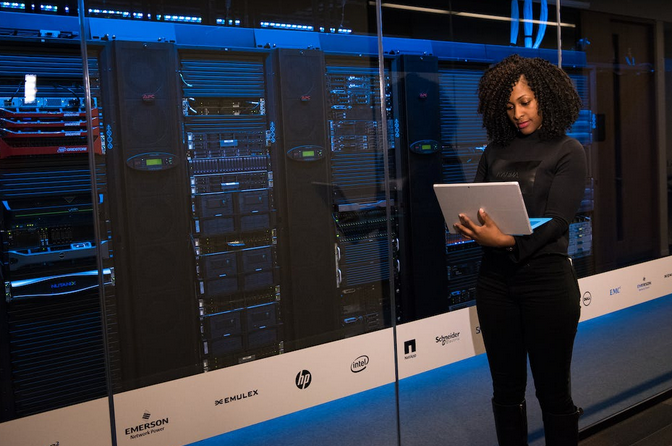Server equipment is an essential component in any IT infrastructure, as it serves as the backbone for data storage and processing. Over the decades, server equipment has undergone significant changes, from bulky mainframes to modern cloud servers that can fit in the palm of our hands. In this article, we will explore the evolution of server equipment and how it has shaped the IT industry.
The Rise of Mainframes

Mainframes were the first generation of server equipment introduced in the 1950s. These large and expensive machines were the size of a room and used primarily by large organizations for data processing. They were responsible for handling critical tasks such as payroll, accounting, and inventory management. Mainframes had limited storage capacity but could process a large amount of data at one time. They were also highly reliable and had built-in redundancy to prevent system failures.
The Emergence of Client-Server Architecture
In the 1980s, with the rise of personal computers, a new type of server equipment emerged – client-server architecture. This approach involved dividing tasks between a client computer and a server computer, allowing for decentralized data processing and storage. Client-server architecture significantly reduced the cost of server equipment, making it more accessible for smaller businesses and individuals.
The Advent of Virtualization
In the early 2000s, virtualization technology revolutionized server equipment. It allowed multiple operating systems to run on one physical server simultaneously, increasing efficiency and reducing hardware costs. This led to the rise of blade servers, which were smaller and more energy-efficient than traditional servers. Virtualization also paved the way for cloud computing, making it possible to access storage and processing power remotely.
The Age of Cloud Computing

Cloud computing is the latest and most significant shift in server equipment. It involves delivering on-demand computing services over the internet, including servers, storage, databases, software, and analytics. Cloud servers are highly scalable, secure, and cost-effective, making them the preferred choice for businesses of all sizes. With cloud computing, companies can access and manage their data and applications from anywhere in the world.
The Future of Server Equipment
As technology continues to advance at a rapid pace, we can expect to see further changes in server equipment. The demand for more processing power, storage capacity, and energy efficiency will drive the development of new server technologies. Artificial intelligence and edge computing are also set to have a significant impact on server equipment in the coming years.
The evolution of server equipment from mainframes to cloud servers represents a journey of innovation, efficiency, and adaptability. Each phase has brought about significant advancements, reshaping the way we handle data and conduct business. As technology continues to evolve, the realm of server equipment remains a dynamic space, constantly pushing boundaries to meet the ever-changing needs of the digital world.…



 Dolphins and bats use something called echolocation to navigate and find prey in the water and in the air, respectively. This same principle can be applied to tracking down sea monsters. By using sonar, we can create a map of the ocean floor and look for any anomalies that could be indicative of a sea monster’s lair. However, this method is not without its flaws. For one, sonar can only be used to map relatively shallow areas of the ocean.
Dolphins and bats use something called echolocation to navigate and find prey in the water and in the air, respectively. This same principle can be applied to tracking down sea monsters. By using sonar, we can create a map of the ocean floor and look for any anomalies that could be indicative of a sea monster’s lair. However, this method is not without its flaws. For one, sonar can only be used to map relatively shallow areas of the ocean. Everyone uses drones these days, but did you know that there are also drones designed for use in water? These aquatic drones are equipped with cameras and other sensors that allow them to collect data about their surroundings. Aquatic drones could be used to explore the oceans in search of sea monsters. They would be able to go inside underwater caves and gorges, and they would be able to gather information about these creatures without putting anyone in danger. Do you think any of this technology will be useful in finding sea monsters? Or are they just a huge waste of money? Let us know in the comments below.…
Everyone uses drones these days, but did you know that there are also drones designed for use in water? These aquatic drones are equipped with cameras and other sensors that allow them to collect data about their surroundings. Aquatic drones could be used to explore the oceans in search of sea monsters. They would be able to go inside underwater caves and gorges, and they would be able to gather information about these creatures without putting anyone in danger. Do you think any of this technology will be useful in finding sea monsters? Or are they just a huge waste of money? Let us know in the comments below.…
 Food Tracking Apps
Food Tracking Apps Fitness Apps
Fitness Apps